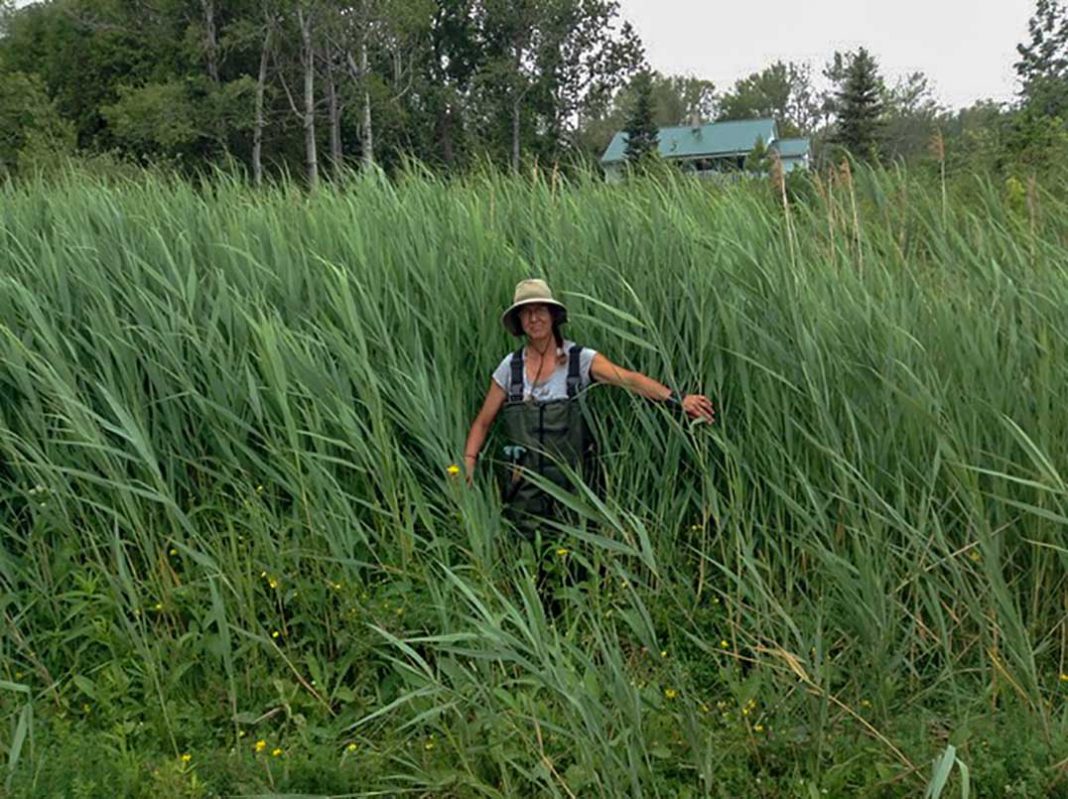MANITOULIN—Hunters, ATV riders, and people out in the bush at this time of year are being asked to watch out for invasive phragmites. The Manitoulin Phragmites Project is asking the public’s help stop the spread of this huge, foreign grass which is aggressively spreading on Manitoulin’s shores and in wetlands and ditches.
Hunters are being asked to take care not to drive or walk through patches of phragmites. Project coordinator Judith Jones told the Expositor this week that the dry plants still have seeds on them. The seeds may travel to new locations stuck to tires, clothing, or any other surface. In summer, ATVs and vehicles may also accidentally transport pieces of the live stalks which can fall off and sprout in a new location. Both seeds and fragments can start new patches of phragmites.
Phragmites (say “frag-MITE-eez”) is mainly spread by vehicles—ATVs, 4X4 trucks and larger machinery.
“It is of critical importance that people do not drive through phragmites, and everyone should clean off their bikes or machines each day before heading out,” Ms. Jones said. “If any pieces fall off in your yard or driveway it is not likely they will be able grow, but if by chance they do—you’ll see it and can deal with it.”
To clean an ATV when temperatures are above freezing, a quick spray-down with a garden hose is recommended, directing the water especially to the tires, and insides of the wheels where mud builds up. If temperatures are below freezing, dry-brushing the underside of the machine with a scrub-brush or a broom can be done instead to remove mud and plant material.
The Manitoulin Phragmites Project also would like to know where hunters are seeing the grass. Reports from the public are still needed even during the winter. “There are many places we never get to, and we need to know where these patches are so we can get them under control next summer,” Ms. Jones said.
Phragmites may grow to be more than 10 feet tall. It has very broad leaves and a hard, durable stem that dries and stays standing through the winter. Patches of the grass can grow so dense that turtles can’t crawl through them, people can’t climb through them, and eventually nothing else is able to grow in them. Stands of phragmites in shallow water destroy fish spawning habitat and water fowl nesting areas, and can make it so people can no longer use the beach or see the water from their camp.
The Manitoulin Phragmites Project was formed in 2016 to address the spread of this invasive species. The group hosts Manitoulin Phragmites Week in July with demonstrations on how to get rid of phragmites and work bees where the public helps with control work. Funding for the project continues through 2019.
Report phragmites locations to the Manitoulin Phragmites Project through their Facebook page @manitoulinphrag or by email to manitoulinphrag@yahoo.com or by leaving a message at (705) 859-1027. More information on how to identify phragmites and what to do about it can be found in the project’s information pamphlet available from their Facebook page and in hard copy at most of the Island’s municipal or town offices.



